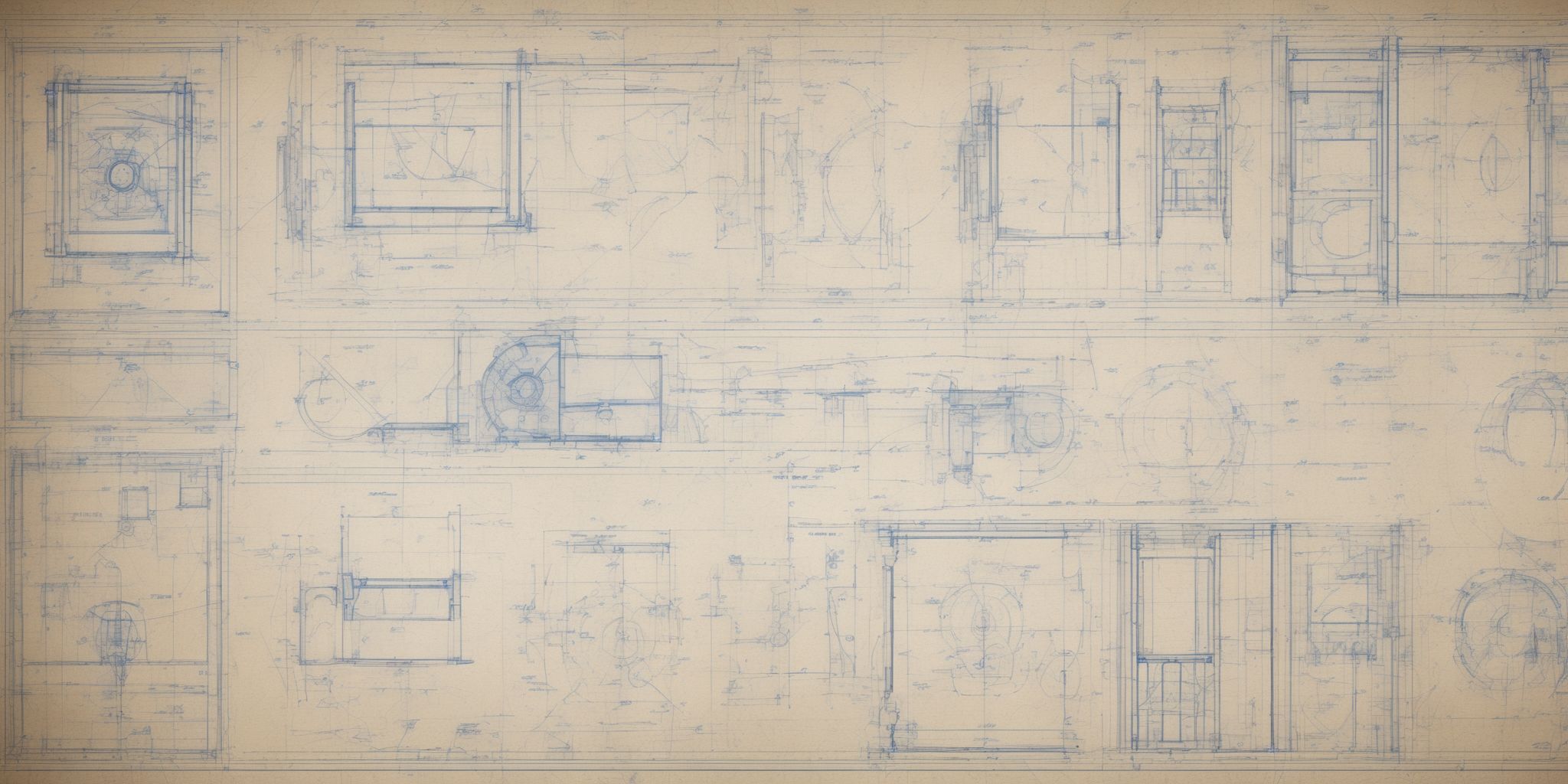Home Equity Loan vs HELOC: Which Is the Right Option for You?
Are you a homeowner seeking financial flexibility and wondering which lending path to take? Well, you're not alone! With various options available, it can be overwhelming to choose between a home equity loan and a home equity line of credit (HELOC). Whether you're dreaming of that long-overdue home renovation project or want to consolidate your debts, we've got you covered.
In this article, we'll dive into the differences between home equity loans and HELOCs, helping you make an informed decision that suits your specific needs. So, grab a cup of coffee, take a seat, and let's unravel this financial conundrum together!
Understanding Home Equity Loan and HELOC
A Home Equity Loan is a fixed-rate loan that allows homeowners to borrow a lump sum of money using their home's equity as collateral. The loan is repaid in equal monthly installments over a fixed term. On the other hand, a Home Equity Line of Credit is a revolving line of credit that allows homeowners to borrow against their home's equity when needed. It functions similar to a credit card, providing flexibility in accessing funds and repaying them as the credit line rotates.
Both options offer financing based on home equity, but they differ in terms of payment structure and accessibility to funds. Home Equity Loans provide a predictable repayment schedule, while HELOCs offer flexibility to draw funds when necessary. Understanding these distinctions is crucial when deciding the right option for your financial needs.
Differences between Home Equity Loan and HELOC
Payment Structure
The payment structure differs between a home equity loan and a HELOC. A home equity loan typically follows a fixed-rate structure, where borrowers receive a lump sum and repay it over a set period with fixed monthly payments. In contrast, a HELOC offers a variable interest rate, and borrowers have a credit line from which they can withdraw funds as needed during a specified draw period. During the draw period, borrowers make interest-only payments, after which they enter the repayment phase, during which principal and interest are paid. It's essential to understand these payment structures to choose the option that aligns with your financial needs and goals.
Home Equity Loan
A home equity loan allows homeowners to borrow a lump sum of money using their home as collateral. This type of loan typically has a fixed interest rate and a predictable repayment schedule, making it suitable for one-time expenses or projects with a defined budget.
For example, if you plan to renovate your kitchen, a home equity loan provides a set amount that can be used specifically for that purpose. Keep in mind that you'll start repaying the loan immediately, regardless of whether you've used all the funds, so it's important to have a clear plan for how you'll allocate the money.
HELOC
HELOC, which stands for Home Equity Line of Credit, is a flexible borrowing option where homeowners can access funds as needed. Unlike a home equity loan, where you receive a lump sum upfront, a HELOC acts more like a credit card. You can draw money from the line of credit during a specific time period known as the "draw period." This period is typically around 5-10 years, and you only pay interest on the amount you actually use.
HELOCs offer the convenience of having funds readily available for various expenses like home renovations, education, or debt consolidation. The interest rates for HELOCs are variable, meaning they can fluctuate over time based on market conditions. It's important to carefully consider your financial goals and usage requirements before deciding if a HELOC is the right option for you.
Interest Rates
Interest rates play a significant role when comparing home equity loans and HELOCs. Home equity loans typically have fixed interest rates, providing borrowers with stability and predictable payments. On the other hand, HELOCs often come with variable interest rates, which can fluctuate over time. While fixed rates offer certainty, variable rates may initially be lower, allowing for potential savings. However, in periods of rising interest rates, the cost of a variable rate HELOC could increase.
It is important to carefully consider your financial situation and goals, as well as the current interest rate environment, to make an informed decision.
Home Equity Loan
A home equity loan is a lump-sum loan that allows homeowners to borrow against the equity in their property. It's repaid in fixed monthly installments, usually at a fixed interest rate. This type of loan can be a suitable choice for a one-time expense, such as a major home renovation or paying off high-interest debt.
For example, if you need $50,000 to remodel your kitchen, a home equity loan can provide the funds upfront. However, keep in mind that once you've borrowed the money, you'll start paying interest on the entire loan amount right away, regardless of how much you've used.
HELOC
HELOCs, or Home Equity Lines of Credit, are flexible loan options that allow homeowners to access funds as needed. Here's a concise overview:
- Flexibility: HELOCs function like a credit card, giving you access to a predetermined credit limit that you can draw from and repay over time.
- Variable Interest Rates: Unlike fixed-rate home equity loans, HELOCs often have variable interest rates that can fluctuate over time.
- Revolving Credit: As you repay the borrowed amount, the credit becomes available again, offering ongoing access to funds during the draw period.
- Ideal for ongoing expenses: HELOCs are suitable for ongoing expenses like home renovations or education expenses due to their revolving nature.
- Potential Risks: As interest rates can change, it’s crucial to be mindful of potential rate increases that could impact your repayment terms. It’s essential to carefully consider your financial situation before opting for a HELOC.
Remember, it's always wise to carefully assess your financial goals and stability before deciding on the best loan option for your needs.
Access to Funds
When comparing a home equity loan and a HELOC, access to funds is an important factor to consider. With a home equity loan, you typically receive a lump sum upfront, which can be useful for specific projects or expenses. On the other hand, a HELOC functions more like a credit line, allowing you to withdraw funds as needed over a specified period. This flexibility can be beneficial if you have ongoing expenses or unsure about the total amount needed. However, it's essential to manage HELOC withdrawals responsibly to avoid overspending or accumulating unnecessary debt. Assess your financial situation and project requirements to determine which option aligns better with your needs.
Home Equity Loan
A home equity loan is a lump sum loan that allows homeowners to borrow against the equity in their property. It offers a fixed interest rate and predictable monthly payments, making it suitable for those who prefer stability and budgeting accuracy. This option is ideal for specific, one-time expenses like home renovations or consolidating high-interest debt.
For example, homeowners can use a home equity loan to remodel their kitchen or pay off outstanding credit card balances. The borrowed funds are received upfront, providing immediate access to cash for planned expenses.
HELOC
HELOC, or Home Equity Line of Credit, is a flexible borrowing option that allows homeowners to access funds based on their home equity. With HELOC, you can borrow money as needed up to a predetermined limit and only pay interest on the amount you borrow. This type of loan provides homeowners with the convenience of accessing funds for various purposes, such as home renovations or unexpected expenses.
For example, you could use your HELOC to cover the cost of a kitchen remodel or to pay for your child's education. The ability to tap into your home's equity when needed gives you financial flexibility and can be a useful tool for managing expenses.
Considerations for Choosing
Financial Goals and Stability
Financial goals and stability are significant factors to consider when deciding between a home equity loan or a HELOC. It is important to assess your short and long-term financial objectives before making a choice.
For example, if you have a specific and immediate need like consolidating high-interest debt, a home equity loan may be appropriate. On the other hand, if you require flexibility for future expenses or ongoing projects, a HELOC might be a better fit. Evaluating your financial stability, such as considering your income stability and ability to make monthly payments, is also crucial when selecting the right option for you. Make sure to align your financial goals and stability with the features and terms of each loan type.
Loan Purpose and Usage
The purpose and usage of the loan are important factors to consider when deciding between a home equity loan and a HELOC. A home equity loan is typically used for a specific one-time expense, such as home renovations or debt consolidation. It provides a lump sum amount that is repaid over a fixed term. On the other hand, a HELOC offers more flexibility and is suitable for ongoing or unpredictable expenses, like education costs or emergency funds. With a HELOC, you can draw funds as needed and only pay interest on the amount borrowed. Consider your specific financial goals and how you plan to use the loan before making a decision.
Credit Score and Qualifications
To obtain a Home Equity Loan or HELOC, your credit score and qualifications are significant factors. Lenders typically prefer borrowers with good credit scores (generally above 620) as they demonstrate a history of responsible borrowing.
Additionally, they consider factors like income, employment history, and debt-to-income ratio. Meeting the lender's requirements can increase your chances of approval and help you secure more favorable terms.
For example, a higher credit score may allow you to access a lower interest rate or qualify for a higher loan amount. Keeping your credit score in good shape by making timely payments, managing your debts responsibly, and keeping credit utilization low is crucial when considering a Home Equity Loan or HELOC.
Interest Rate Preferences
Conclusion
Homeowners who are considering tapping into the equity in their homes often find themselves confused between two popular options: a home equity loan and a home equity line of credit. While both options allow you to borrow against the value of your home, they differ in terms of interest rates, repayment terms, and flexibility. A home equity loan provides a lump sum with a fixed interest rate and predictable monthly payments, making it suitable for those who prefer stability.

